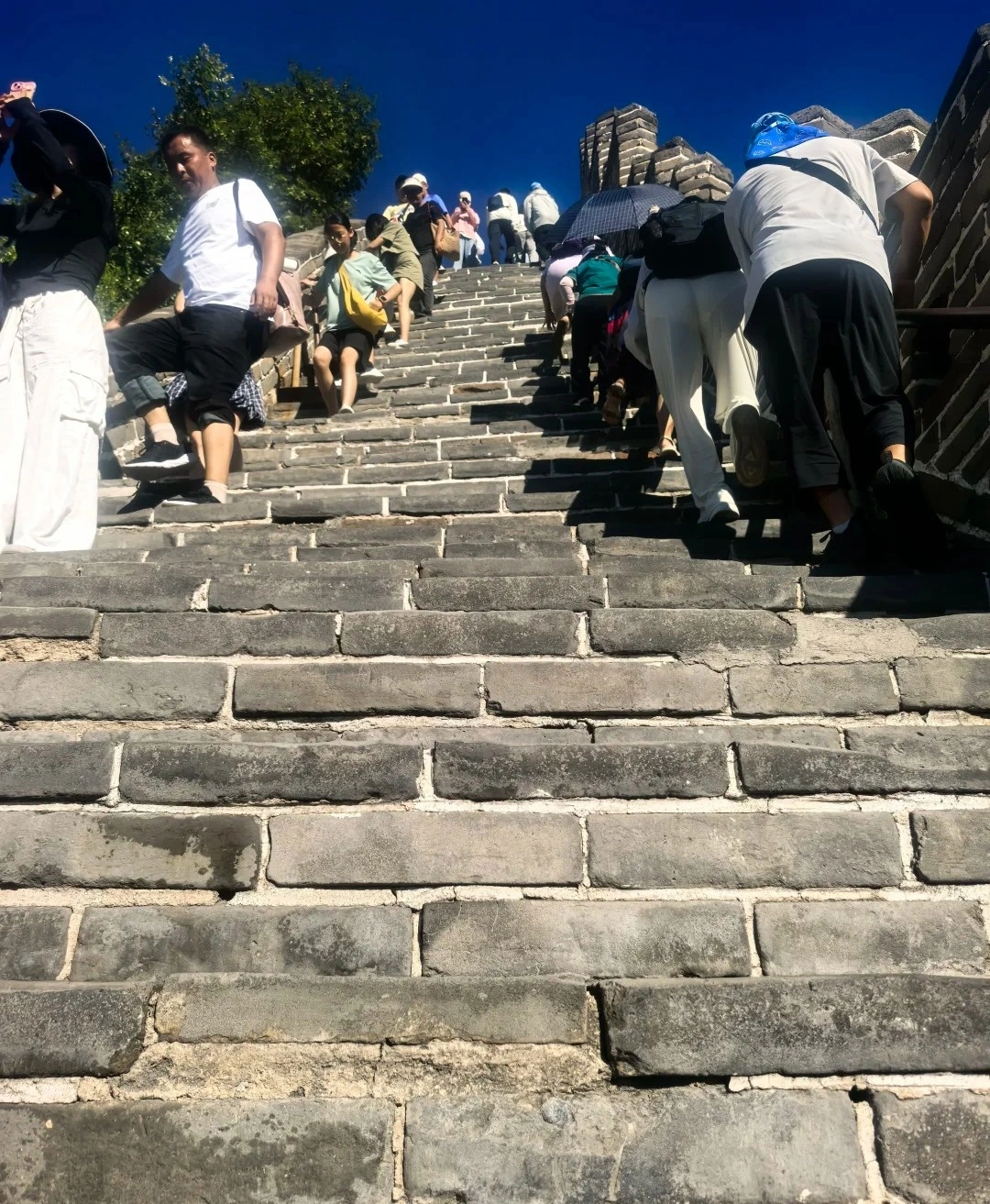Forbidden City
Historical Overview
Construction began in 1406, with over 1 million workers and 100,000 artisans mobilized. The palace’s design mirrored celestial patterns, with the Purple Forbidden Enclosure (Ziwei Xuan) concept linking emperors to divine authority. Over 500 years, it witnessed pivotal events: the Ming Dynasty’s rise, the Manchu conquest, and the 1911 Xinhai Revolution. In 1925, it transformed into The Palace Museum, opening to the public. Notable moments include the 1945 surrender ceremony of Japanese forces in China at the Hall of Supreme Harmony and the 1987 UNESCO inscription, cementing its global cultural status.
Structural Layout
The complex follows a north-south axis with two main sections:
Outer Court (Front Palace): The political hub, centered on the Three Great Halls—Hall of Supreme Harmony (Taihedian), Hall of Central Harmony (Zhonghedian), and Hall of Preserving Harmony (Baohedian)—used for coronations, imperial weddings, and military dispatches.
Inner Court (Rear Palace): The residential zone, featuring the Palace of Heavenly Purity (Qianqinggong), Hall of Union (Jiaotaidian), and Palace of Earthly Tranquility (Kunninggong). Surrounding them are the Six Eastern Palaces and Six Western Palaces for imperial consorts.
Key supporting structures include the Gate of Divine Prowess (Shenwumen), Meridian Gate (Wumen), Imperial Garden, and Gate of Military Eminence (Wumen).
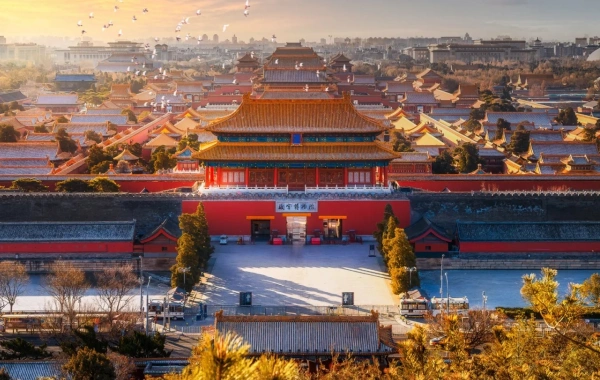
(Main entrance)
Major Attractions
1.Hall of Supreme Harmony: The largest wooden hall in China, with a 25-ton throne and 10 mythical beasts on its roof.
2.Nine-Dragon Wall: A 30-meter-long glazed-tile mural symbolizing imperial power.
3.Hall of Mental Cultivation (Yangxindian): Emperors’ private study and residence from the 18th century.
4.Pavilion of the Fragrance of the Buddha (Zhenfoge): A Tibetan Buddhist temple within the palace.
5.Clock Gallery (Zhongbiaoguan): Displays 200+ intricate imperial clocks from Europe and China.
6.Treasure Gallery (Zhenbaoguan): Showcases jade, gold, and pearl artifacts, including the 25-ton “Great Ming Vase.”
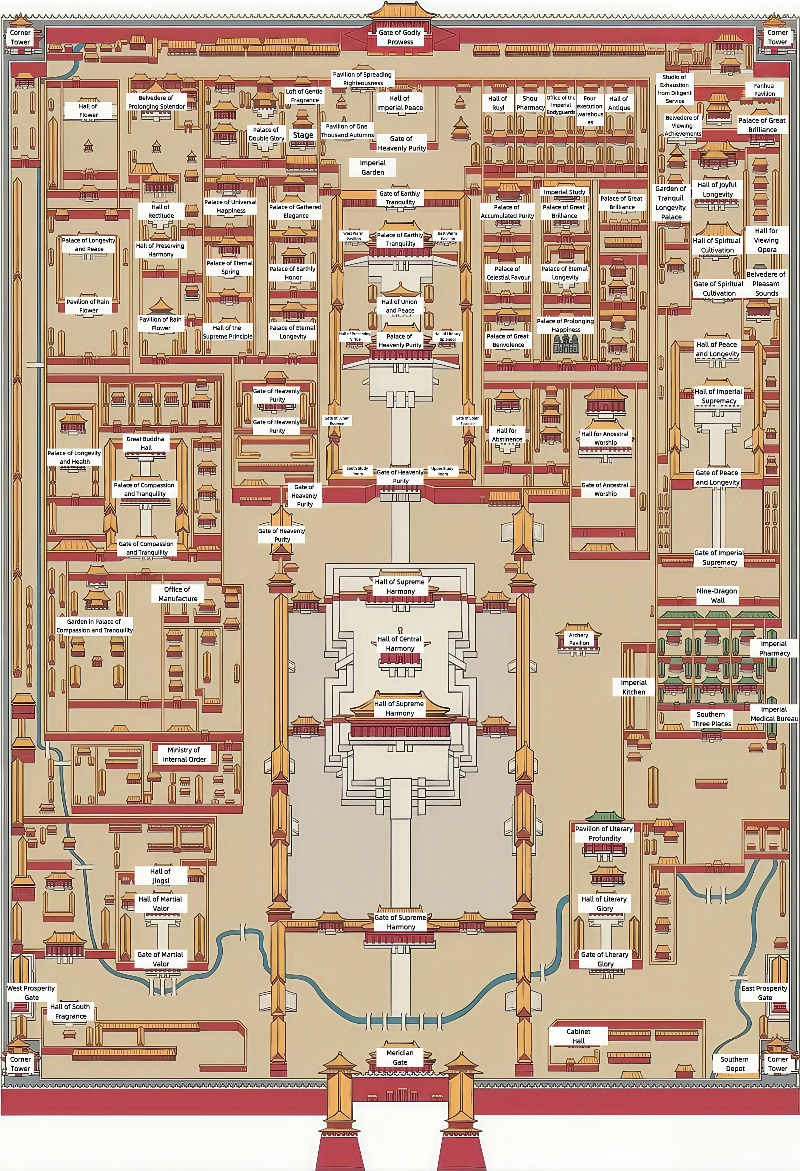
Suggested Itineraries
1. Classic Route (2–3 hours):
Wumen (Meridian Gate) → Taihedian (Hall of Supreme Harmony) → Zhonghedian (Hall of Central Harmony) → Baohedian (Hall of Preserving Harmony) → Qianqinggong (Palace of Heavenly Purity) → Jiaotaidian (Hall of Union) → Kunninggong (Palace of Earthly Tranquility) → Imperial Garden → Shenwumen (Gate of Divine Prowess)
Highlights: Core imperial halls and the emperor’s private quarters.
2. Extended Route (4–5 hours):
Wumen → Wuyingdian (Hall of Martial Valor) → Taihedian → Zhonghedian → Baohedian → Qianqinggong → Jiaotaidian → Kunninggong → Eastern Six Palaces → Zhenfoge (Pavilion of the Fragrance of the Buddha) → Treasure Gallery → Shenwumen
Highlights: Addition of consort palaces, Buddhist temples, and the Treasure Gallery.
3. Comprehensive Route (Full Day):
Wumen → Wuyingdian → Wenyingdian (Hall of Literary Glory) → Taihedian → Zhonghedian → Baohedian → Qianqinggong → Jiaotaidian → Kunninggong → Yangxindian (Hall of Mental Cultivation) → Western Six Palaces → Imperial Garden → Eastern Six Palaces → Zhongbiaoguan (Clock Gallery) → Zhenbaoguan (Treasure Gallery) → Shenwumen
Highlights: In-depth exploration of all major sections, including the emperor’s study and clock collection.
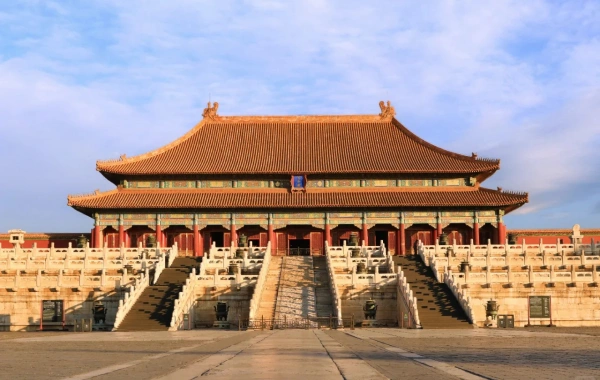
(the Hall of Supreme Harmony)
Ticket Purchase
Online: Book via the official Palace Museum website or WeChat mini-program (up to 7 days in advance).
On-Site: Limited same-day tickets may be available, but queues are long.
Prices:
Peak Season (April–October): ¥60 (adults), ¥30 (students/seniors).
Off-Season (November–March): ¥40 (adults), ¥20 (students/seniors).
Free: Children under 1.2m, disabled visitors, and military personnel.
Transportation
By Subway: Line 1: Tiananmen East Station (Exit B), walk 10 minutes to Wumen. Line 8: Shichahai Station (Exit A2), transfer to a bus or taxi to Shenwumen.
By Bus: Routes 1, 2, 52, 59, 82, 99, or 120 to Tiananmen East Stop.
By Taxi: Direct to Wumen (south entrance) or Shenwumen (north exit).
Departure: Exit via Shenwumen to Jingshan Park or Beihai Park.
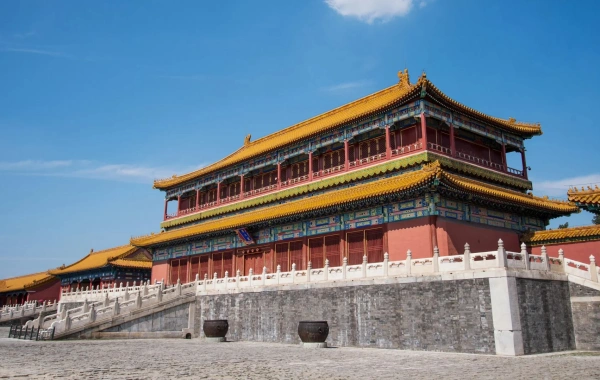
(the Hall of Supreme Harmony)
Best Time & Tips
Peak Hours: Avoid 10 AM–2 PM; visit early (8:30 AM opening) or late (after 3 PM).
Crowds: Weekends and holidays are busiest; weekdays are quieter.
Weather: spring (April–May) and autumn (September–October) are ideal.
Essentials:
Wear comfortable shoes (20,000+ steps possible).
Stay hydrated; bring snacks or purchase food inside.
Photography allowed (no flash in galleries).
Prohibited items: Selfie sticks, drones, and large bags.
Related itineraries
Beijing Classic 1 Day Experience Tou
Beijing 2-day Historical and Cultural Tour: Great Wall&The Forbidden City
Beijing to Zhangjiajie Tour
Other Beijing attractions
If you would like to ask more questions about attractions or have a personalized itinerary, please contact us
Contact Us
¿Qué dicen nuestros clientes?
Basado en más de 10.000 reseñas de viajeros


